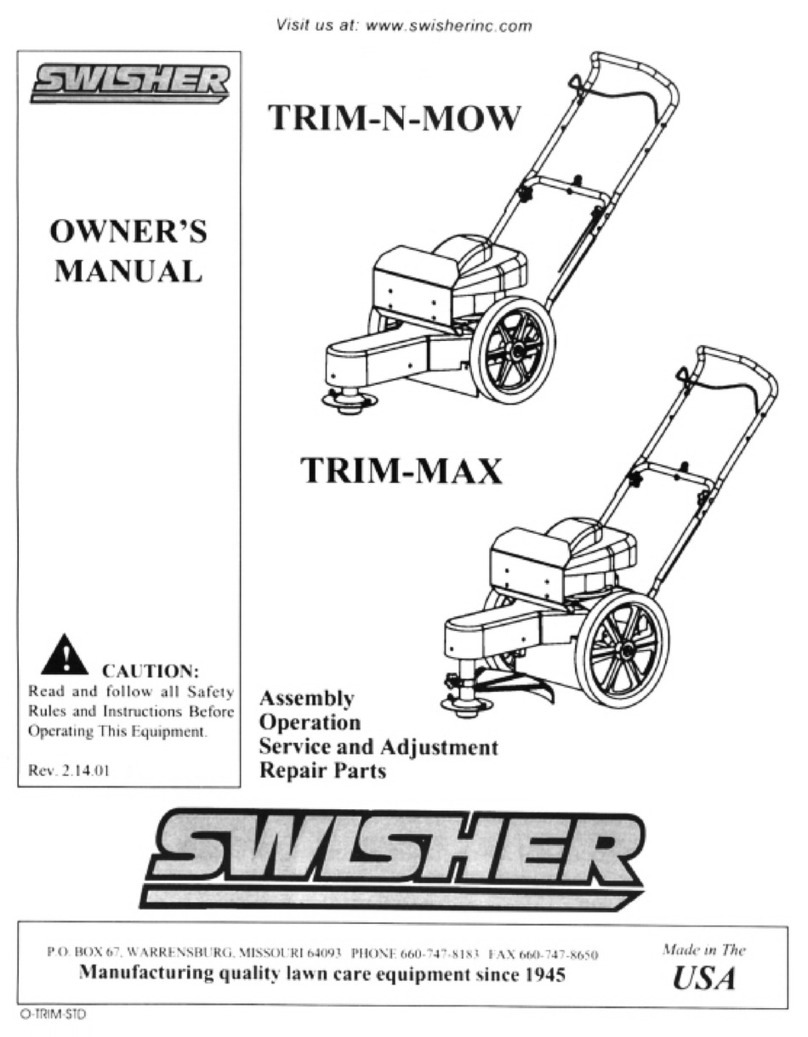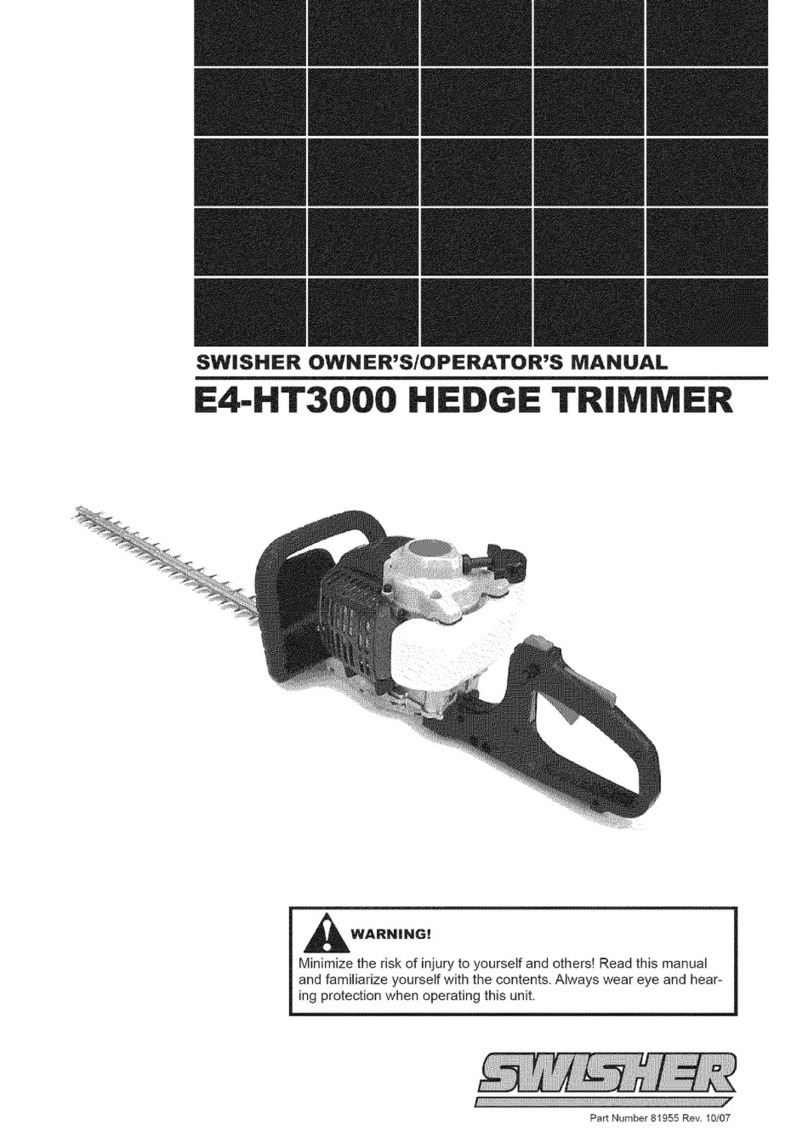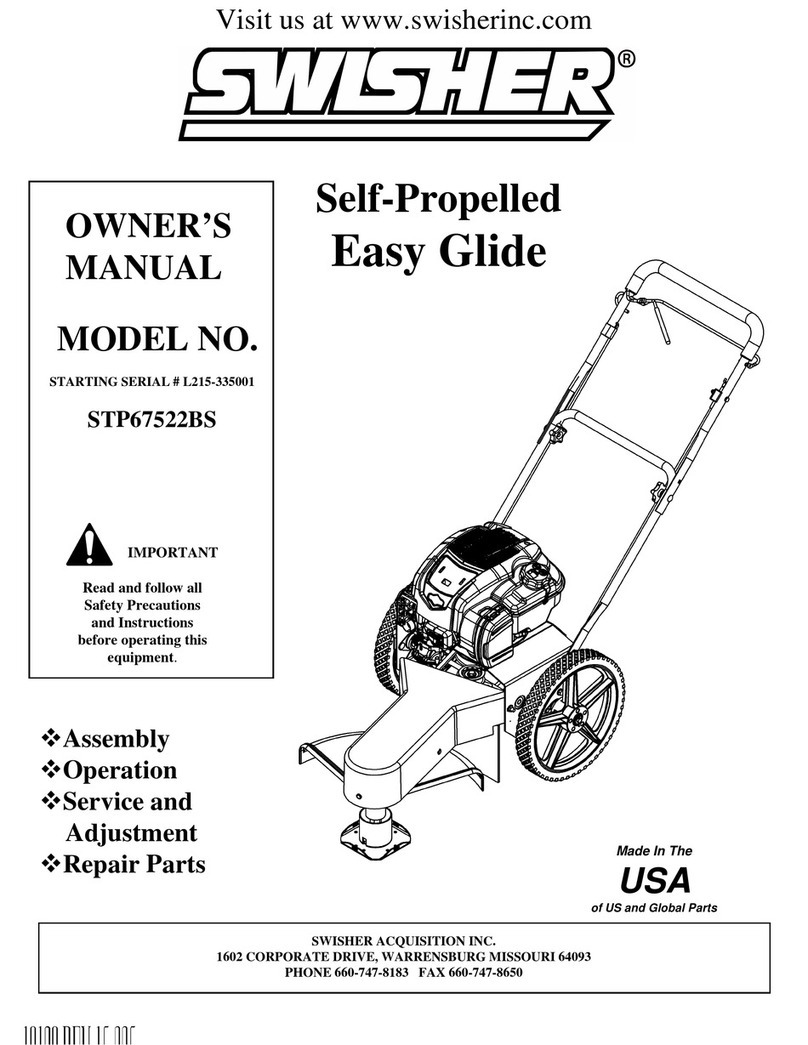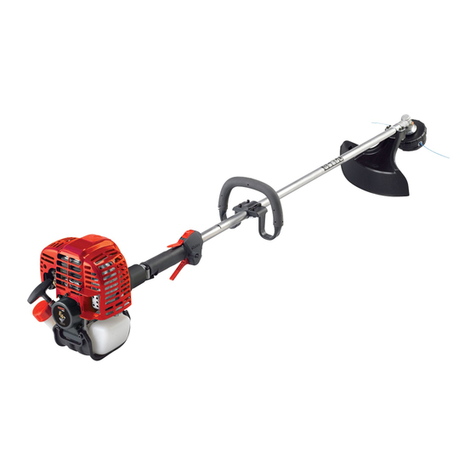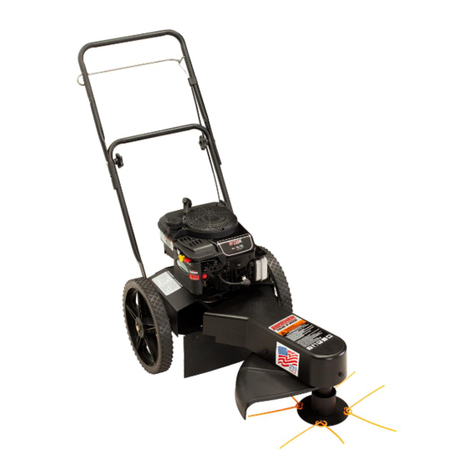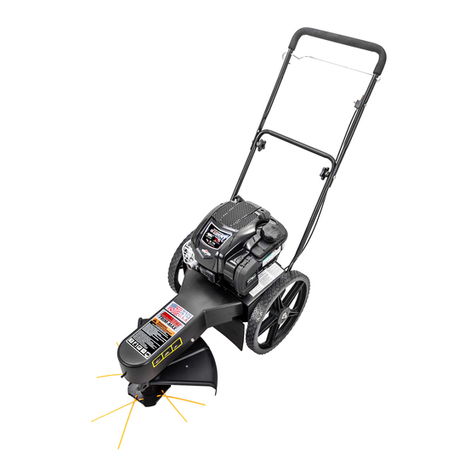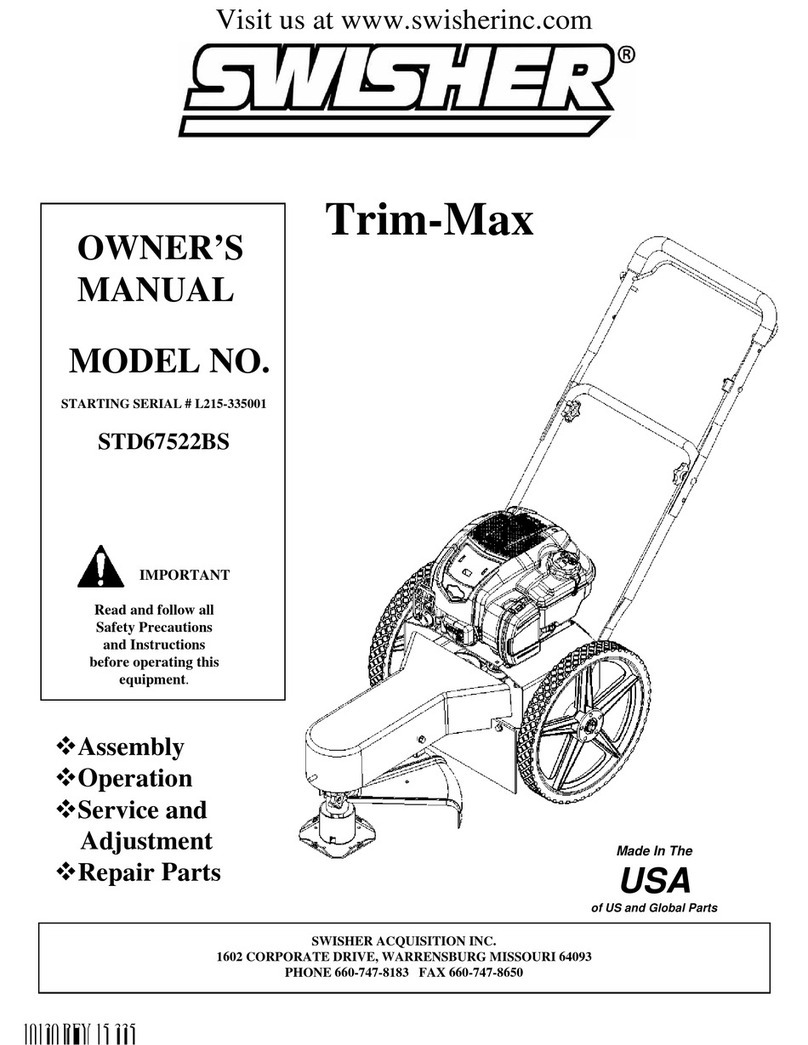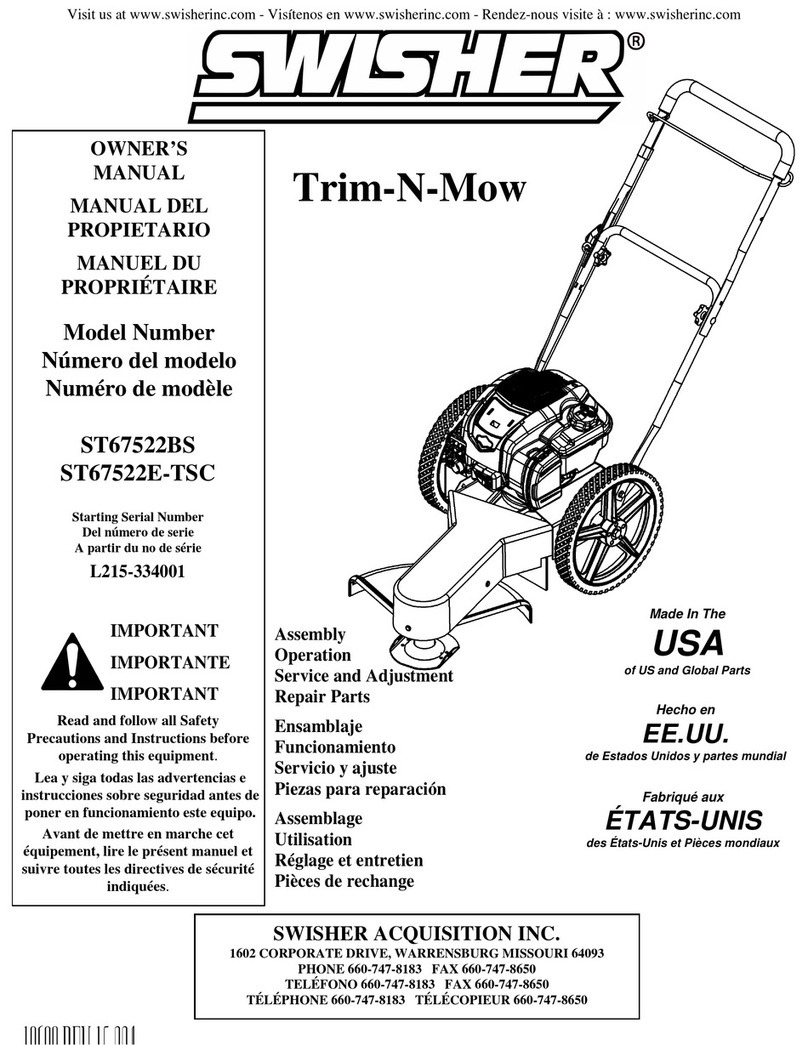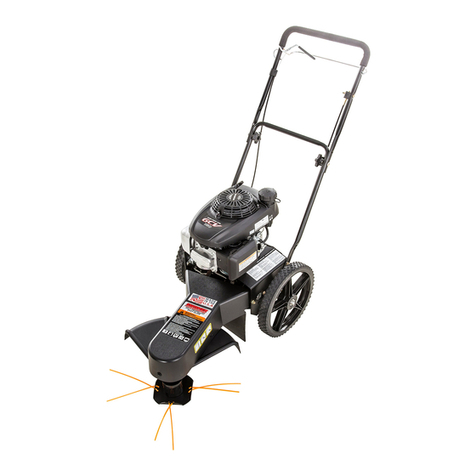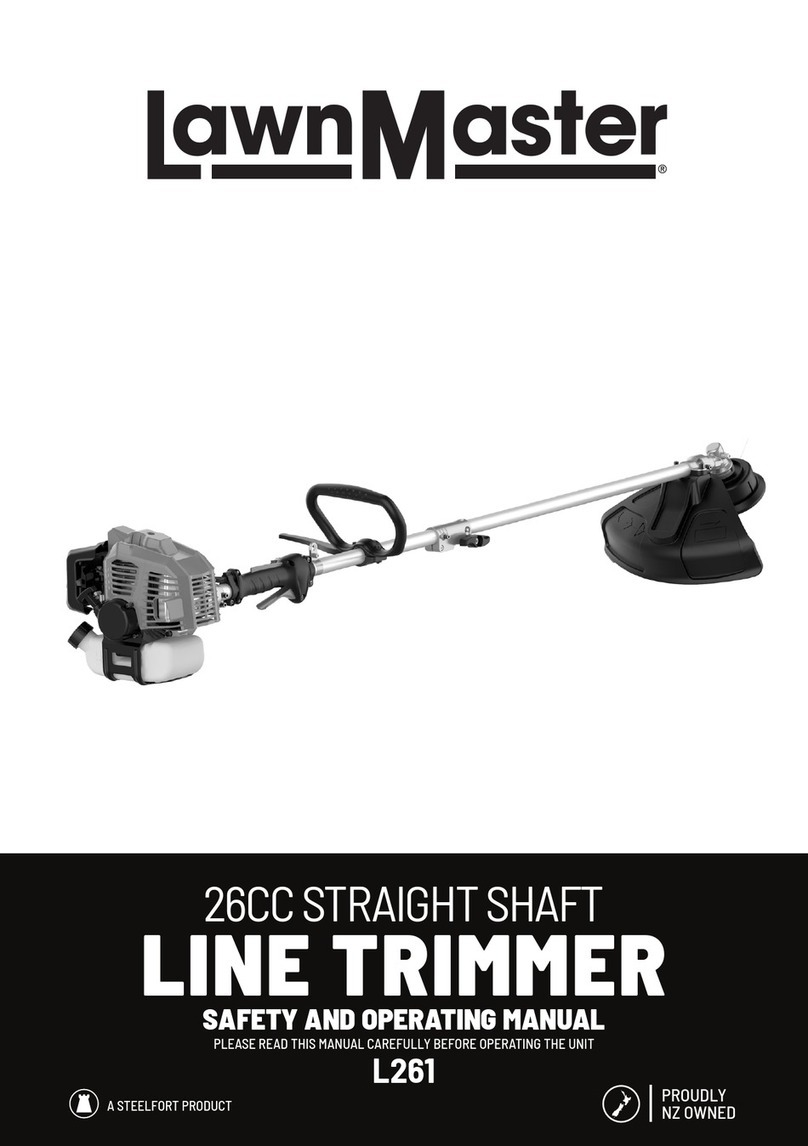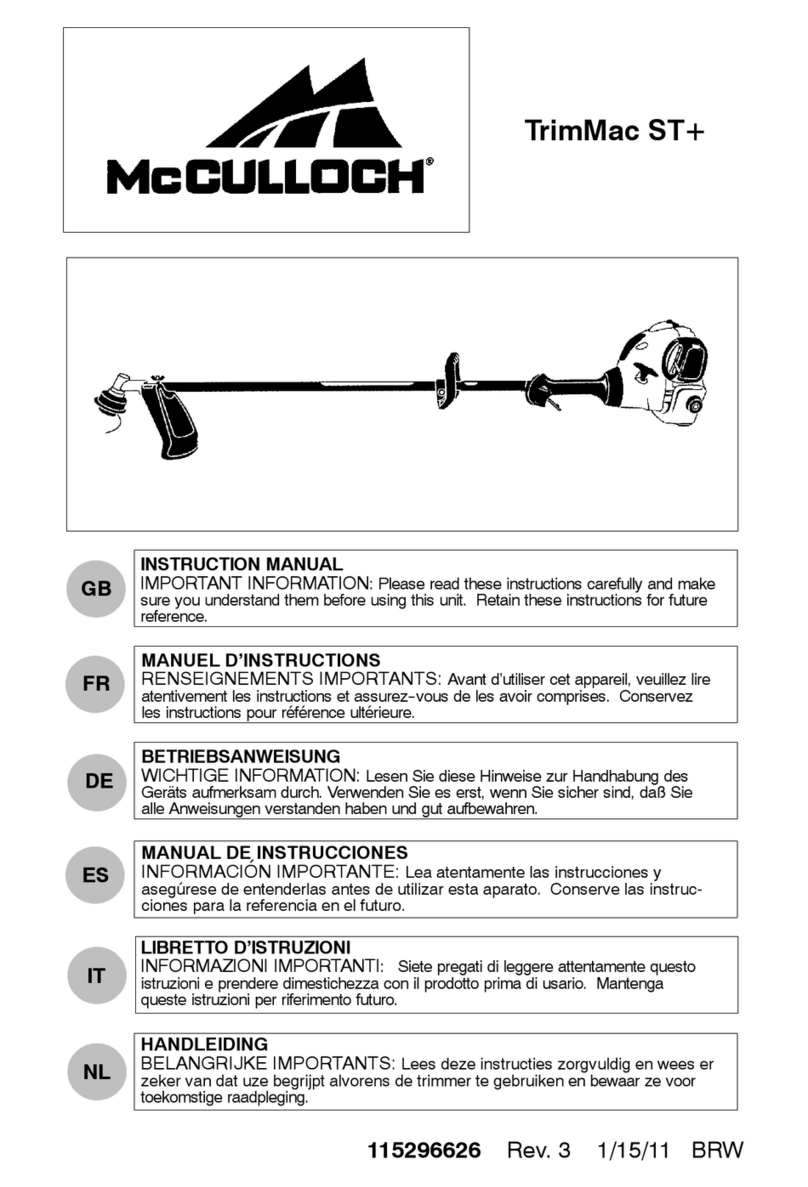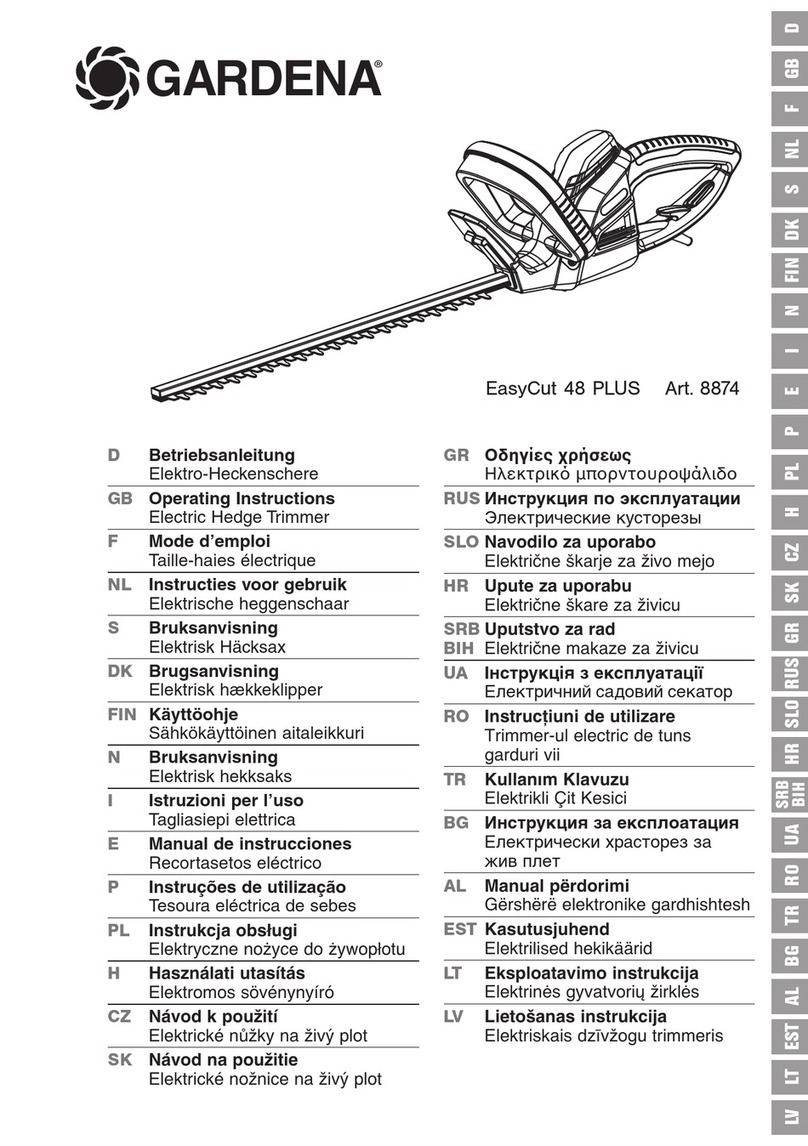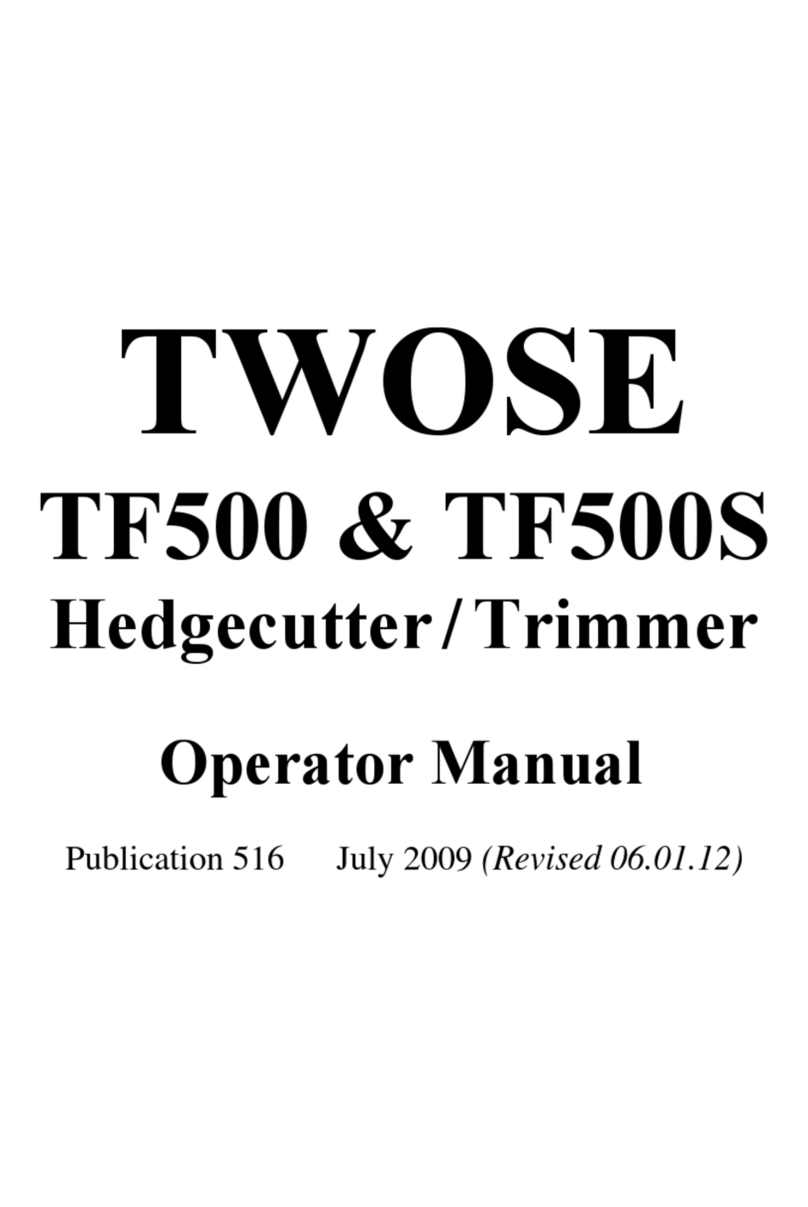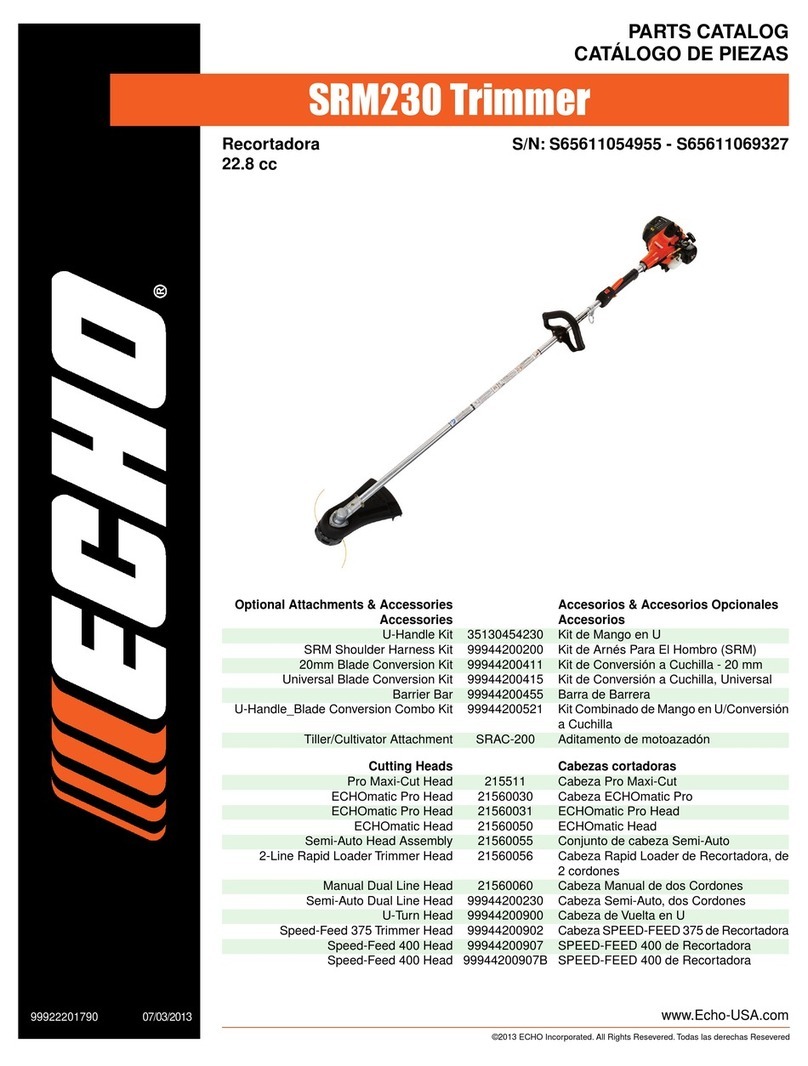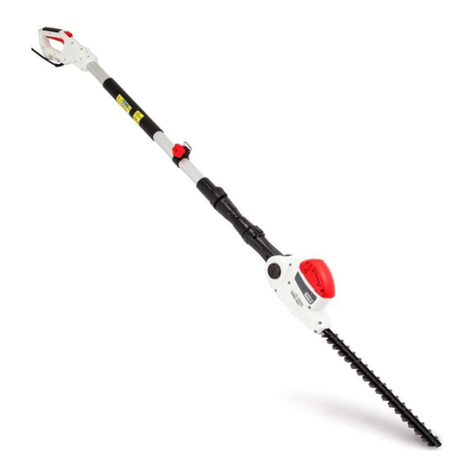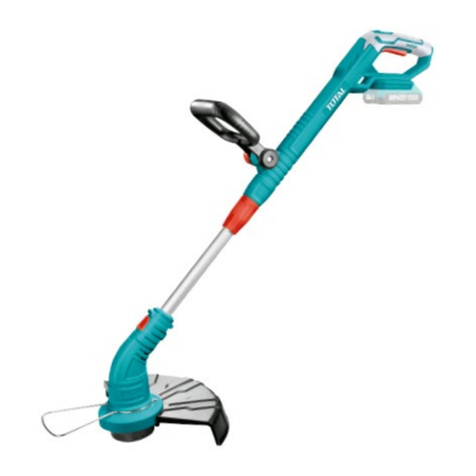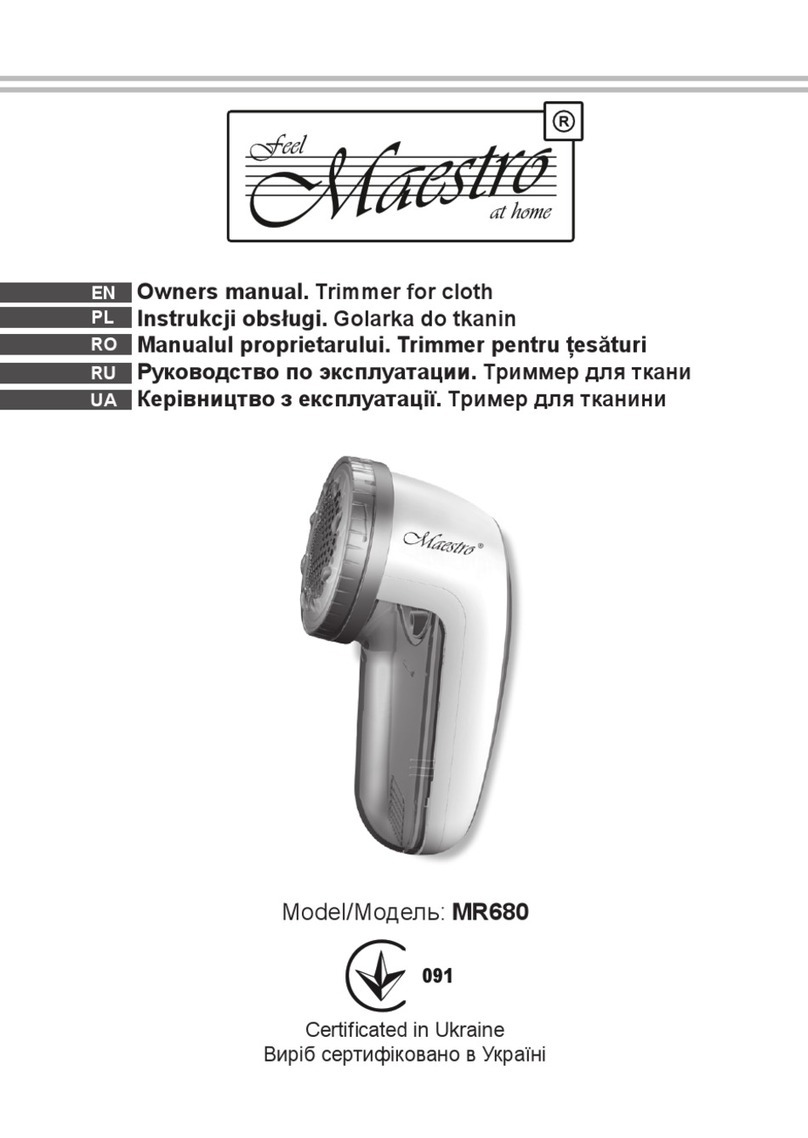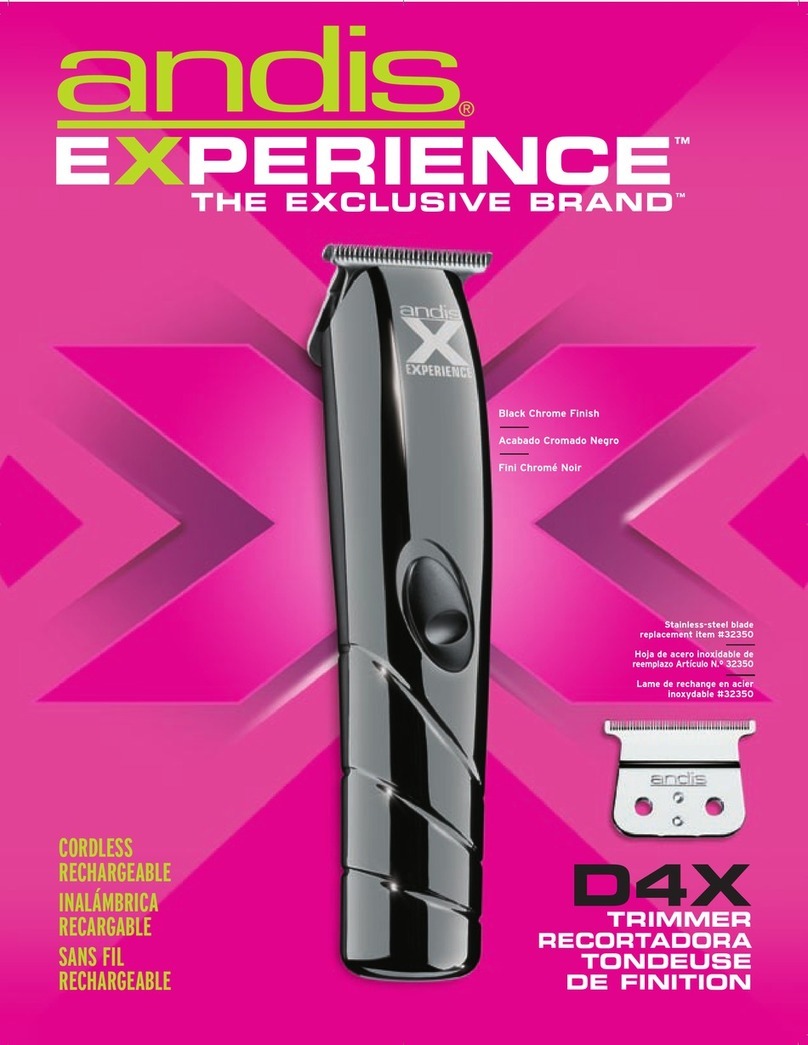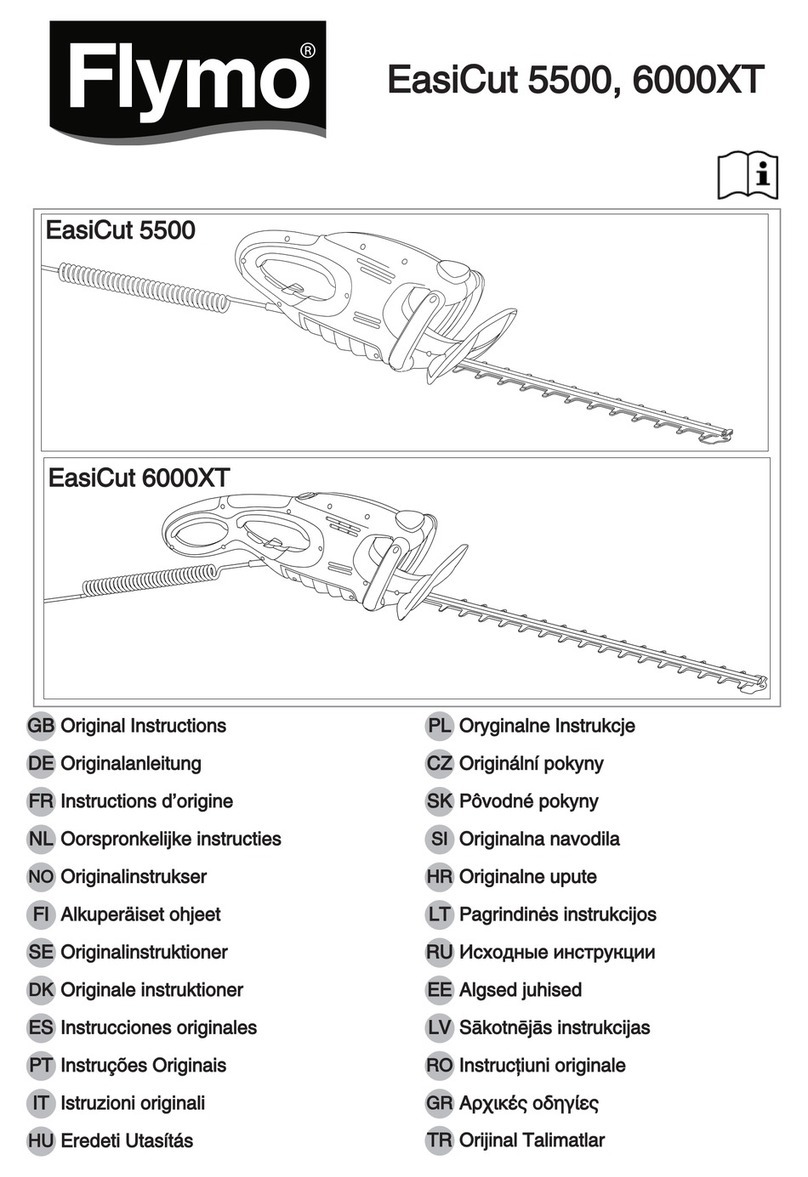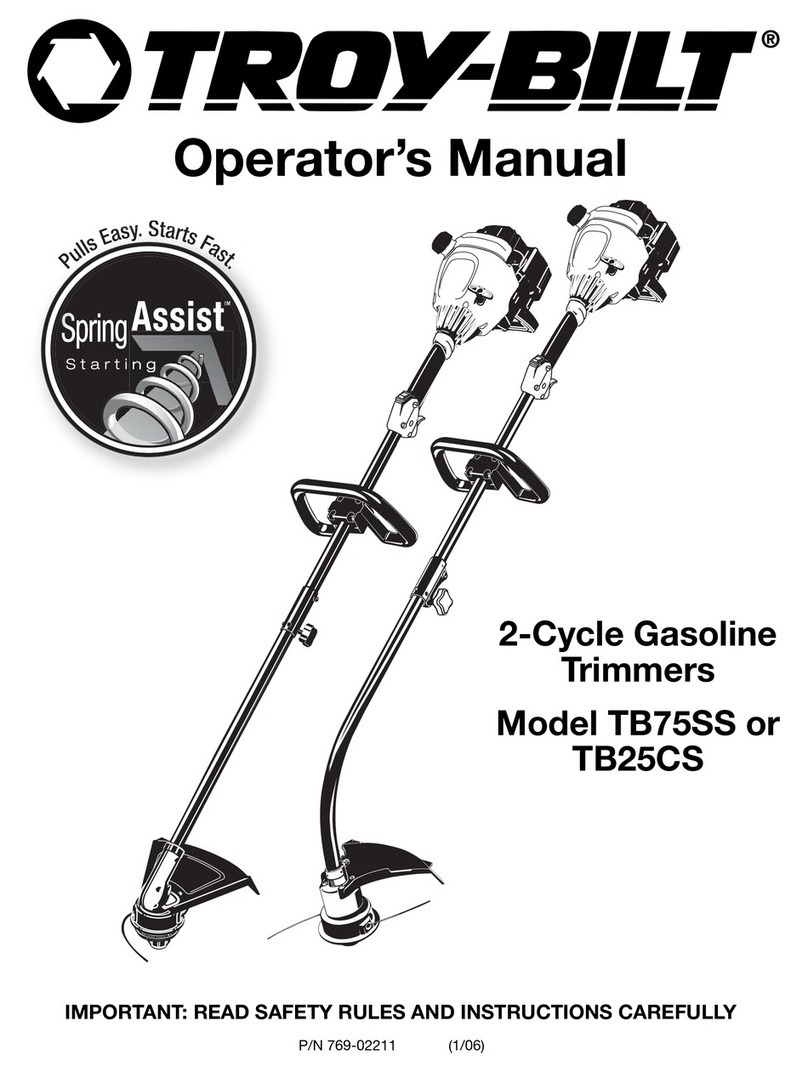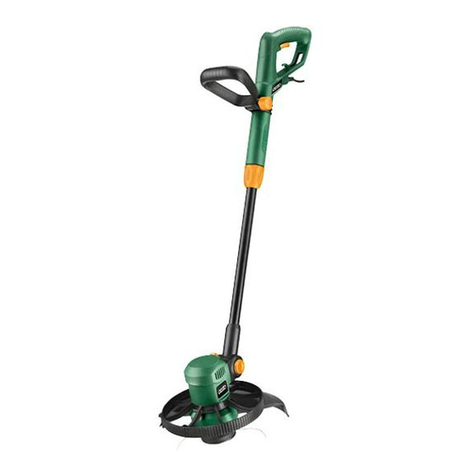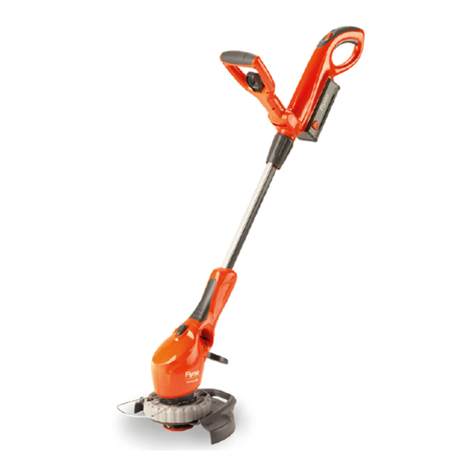
8
IMPORTANT!
Mix only enough fuel for your immediate
needs! If fuel must be stored longer than 30
days and Swisher E4 Engine Oil with fuel
stabilizer is not used, it should rst be treated
with a fuel stabilizer such as STA-BIL™.
Mixing Fuel
1.
Place the trimmer on a flat, level surface.
2. Clear any dirt or other debris from
around the fuel filler cap.
3. Remove the fuel cap, and fill the tank
with clean, fresh fuel.
4. Reinstall the fuel filler cap and tighten
firmly.
Filling the Fuel Tank
CAUTION!
This engine is designed to operate on
a 50:1 mixture consisting of unleaded
gasoline and ISO-L-EGD or JASO FC
class 2-cycle mixing oil only. Use of
non-approved mixing oils can lead to
excessive carbon deposits.
CAUTION!
Never use any type of gasoline con-
taining more than 10% alcohol by vol-
ume! Some types of gasoline contain
alcohol as an oxygenate. Oxygenated
gasoline may cause increased operat-
ing temperatures. Under certain con-
ditions, alcohol-based gasoline may
also reduce the lubricating qualities of
some 2-cycle mixing oils. Generic oils
and some outboard oils may not be
intended for use in high-performance
engines, and should never be used in
your Swisher engine.
nUse only fresh, clean unleaded gasoline
with a pump octane of 87 or higher.
nMix all fuel with a 2-cycle air-cooled mix-
ing oil that meets or exceeds ISO-L-EGD
and/or JASO FC classified oils at 50:1
gasoline/oil ratio.
Examples of 50:1 mixing quantities
n
1 gallon of gasoline to 2.6 oz. mixing oil
n
5 liters of gasoline to 100 ml. mixing oil
Swisher E4 Engine Oil is a registered JASO
FC classified oil and also meets or exceeds
ISO-L-EGD performance requirements.
Swisher E4 engine oil is recommended for
use in all Swisher low emissions engines and
also includes a fuel stabilizer.
WARNING!
Minimize the Risk of Fire
NEVER smoke or light res near the
engine.
ALWAYS stop the engine and allow
it to cool before refueling. Avoid over-
lling and wipe off any fuel that may
have spilled.
ALWAYS inspect the unit for fuel
leaks before each use. During each
rell, check that no fuel leaks from
around the fuel cap and/or fuel tank.
If fuel leaks are evident, stop using the
unit immediately. Fuel leaks must be
repaired before using the unit.
ALWAYS move the unit at least 10
feet (3 meters) away from a fuel stor-
age area or other readily ammable
materials before starting the engine.
NEVER place ammable material
close to the engine mufer.
NEVER operate the engine without
the mufer and spark arrester screen
in place.
1. Turn the trimmer over so that the gearcase
output shaft faces UP. See Figure 5.
2. Remove and discard the plastic retain-
ing plug.
3. Position the tool holder as shown, and
slide the holder onto the output shaft.
See Figure 5.
4. Rotate the tool holder and shaft until the
notch in the holder aligns with the notch
on the gearcase flange, and use the long
end of the hex wrench to lock the output
shaft in position. See Figure 6.
5. While holding the hex wrench, thread
the trimmer head onto the output shaft,
turning counter-clockwise.
WARNING!
A standard grass trimmer
machine should NEVER be oper-
ated with blade-type attachments.
IMPORTANT!
The trimmer head has a left-hand thread.
Turn the trimmer head counter-clockwise
to install.
6. Using hand pressure only, tighten the
trimmer head firmly on the gearshaft.
See Figure 6.
7. Remove the hex wrench.
Output shaft
Tool holder
Position
attachment
so that the
gearcase
output shaft
faces UP
Figure 5
Hex wrench
Turn trimmer head
COUNTERCLOCKWISE to tighten
Figure 6
Install the Trimmer Head
